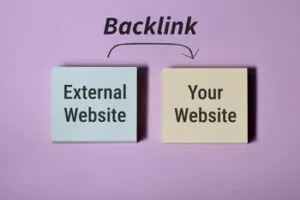In the digital realm, where first impressions are paramount, the emphasis often lands on the visually stunning headers and the compelling content of web pages. However, nestled at the bottom of your web page lies a potent tool for enhancing user experience and bolstering your site’s functionality: the website footer.
This underappreciated element, especially in dental website footer design, is key to guiding visitors and improving website traffic through strategic SEO practices.
The Role of Website Footers in User Experience (UX)
The user experience (UX) encompasses every interaction a visitor has with a website, from the moment they arrive to the moment they leave—and the website footer is a key part of this journey.
Although situated at the bottom, the footer acts as a safety net, ensuring visitors find the information or functionality they seek, which could be missing in the primary content areas.
The Strategic Use of Fat Footers
The concept of a “fat footer” has gained traction in web design as a strategy to enhance UX by providing a wealth of information and links accessible from any page on a website.
Unlike their minimalist counterparts, fat footers are robust and offer a comprehensive snapshot of a website’s resources. This is particularly useful on dental websites, where patients may look for a wide range of information—from service details and educational resources to contact forms and emergency information.
Fat footers serve multiple purposes: they improve site navigation, enhance accessibility, and can positively impact SEO by housing internal links to high-priority pages. For users, the convenience of having a plethora of resources at their fingertips must be balanced, particularly when considering the diverse needs and questions patients may have.
Crafting Effective Footer Templates

Many websites leverage footer templates to streamline design processes and maintain quality standards.
Adopting a footer template that aligns with the practice’s needs and brand identity is vital for dental clinics. This saves time and ensures that all crucial elements are included and properly positioned to maximise website visitors’ benefit. A good footer template can be a checklist, ensuring every critical component is noticed.
Enhancing Engagement as Visitors Scroll
The behaviour of visitors scrolling through a web page provides insights into how footer content can be strategically positioned to capture attention and engage users.
The footer becomes their final interaction point when users reach the bottom of a page. It offers a last chance to engage with the content, find additional resources, or take a specific action, such as subscribing to a newsletter through a subscription form.
For dental websites, where establishing and maintaining patient trust is crucial, the footer offers a space to include comforting information, such as accreditation logos, patient testimonials, or a reassuring message from the dental team.
Encouraging visitors to scroll through to the footer — and rewarding them with valuable information when they do — enhances overall satisfaction and engagement.
Incorporating All Your Links Thoughtfully
A common mistake in footer design is the indiscriminate inclusion of links, which can overwhelm visitors and dilute the footer’s effectiveness. Thoughtful selection and organisation of links are crucial. This might mean prioritising links to patient care information, contact details, and privacy policies for dental practices over less critical content.
The arrangement of links should also consider user behaviour patterns, with the most frequently sought-after information placed prominently. This strategic placement ensures visitors find what they need quickly, improving the overall UX and, by extension, their perception of the dental practice.
Leveraging Footer Design Ideas for Better UX
Exploring innovative footer design ideas is an excellent way to enhance a website’s UX. This could involve incorporating interactive elements, such as a mini-contact form or a dynamically updating section with the latest social media posts.
Other design ideas include visual cues to guide visitors toward the footer, such as arrows or images that subtly encourage downward scrolling.
For dental websites, incorporating before-and-after treatment galleries, patient testimonials, or quick links to emergency services in the footer can significantly improve user engagement and satisfaction. These elements provide useful information and help build trust and credibility with potential patients.
Understanding the Impact of Subscription Forms
Subscription forms in footers offer a seamless way for visitors to stay connected with a dental practice. By inviting visitors to subscribe to newsletters or alerts, practices can inform patients about new services, promotions, and health tips.
This ongoing engagement is critical for building long-term relationships and ensuring patients think of the practice when they need dental services.
However, a subscription form must be included thoughtfully. It should be simple, requiring minimal information (usually just an email address), and clearly explain the benefits of subscribing. Transparency regarding how the information will be used and the frequency of communications is also crucial to avoid deterring potential subscribers.
While often overlooked, the website footer plays a crucial role in enhancing the user experience. Through strategic design and thoughtful inclusion of elements such as fat footers, effective templates, and engaging content, footers can significantly impact how visitors interact with and perceive a website.
For dental practices, where trust and accessibility are paramount, a well-designed footer can make all the difference in attracting and retaining patients.
By leveraging these insights into footer design, website owners can create a more engaging, informative, and user-friendly online presence.
In exploring these facets of website footer design, it becomes evident that the footer is not merely an afterthought but a fundamental component of a website’s overall UX strategy.
By prioritising the design and functionality of the website footer, businesses and professionals, including those in the dental industry, can significantly enhance their online presence, providing a better experience for their visitors and, ultimately, fostering a stronger connection with their audience.
Essential Elements of a Website Footer

Particularly for sectors like dental care, where establishing trust and convenience is paramount, the footer’s composition can significantly influence a visitor’s journey and perception of the site.
Below, we explore the essential elements that constitute an effective website footer, employing these components not just as placeholders but as strategic tools to enhance the visitor experience on your website.
Contact Details and Physical Address
A cornerstone of any reputable website, especially for dental practices, is the clear presentation of contact details and a physical address in the footer section.
This not only aids in establishing trust but also improves local SEO efforts, making it easier for patients to find the clinic. Including this information ensures that regardless of how deep a visitor dives into your site, they can always find a way to reach out or visit in person with minimal effort.
Incorporating a Site Search Tool
Integrating a site search tool within the footer can dramatically improve your website’s usability, allowing visitors to quickly find the information they need. This is particularly beneficial on comprehensive websites where content spans multiple pages.
For dental websites, patients looking for specific treatments, blog posts on dental hygiene, or testimonials can greatly benefit from this feature, enhancing their overall site experience.
Navigation Links and XML Sitemap
Embedding navigation links and an XML sitemap in your footer helps visitors and search engines. It guides users to essential pages on your site, such as services, about us, contact pages, and FAQs, without scrolling back to the top.
For search engines, an XML sitemap facilitates better indexing of your web pages, improving your site’s visibility. This dual utility underscores the footer’s role in website navigation and SEO strategies.
Social Media Integration
In today’s digital age, social media platforms are vital channels for building relationships with patients and increasing brand visibility. Including social media icons linked to your practice’s profiles in the footer encourages visitors to engage with your brand on multiple platforms.
This constant visibility of social media links, coupled with active, engaging social media content, can significantly extend your dental practice’s reach and impact.
Subscription Forms and Email Sign-Up
A subscription or email sign-up form is invaluable for building a practice’s mailing list directly from the footer. This allows for ongoing communication with patients, sharing valuable dental tips, practice updates, and special offers.
This option in the footer ensures visitors can stay connected with your practice, enhancing patient engagement and loyalty.
Footer Design Ideas: Balancing Information and Aesthetics
The footer is not just a repository for information but a component of your site’s overall design and brand identity. Exploring creative footer design ideas can help balance information density with visual appeal.
For instance, a minimalist design with well-organised links, a subtle colour scheme that complements the overall site design, and clear typography can make the footer informative and attractive.
Innovative designs might include interactive elements like hover effects on links or dynamic content sections that update automatically with the latest blog posts or social media activity.
Showcasing All Your Links Intelligently
While including as many links as possible in the footer for convenience or SEO might be tempting, an overcrowded footer can overwhelm visitors and dilute its effectiveness. The key is to select and organise links that provide real value to your website visitors.
This might mean prioritising links to patient resources, appointment booking pages, and service descriptions for dental websites over less essential content.
Leveraging Legal Information: Copyright Symbol and More
A footer is also ideal for displaying legal information, including copyright symbols, terms of use, privacy policies, and disclaimers. This not only protects the website owner but also reinforces the legitimacy and professionalism of the website to its visitors. Ensuring that sensitive patient data is handled with care is paramount for a dental practice, and clearly stated privacy policies can help build patient trust.
The Foundation of a Well-Designed Footer
The elements outlined above represent the foundational blocks of a well-constructed website footer. They serve multiple critical functions, from navigation aid to legal disclaimer, contact point, and social media hub.

The footer is not merely an afterthought or a space to fill with miscellaneous links; it is an integral part of the website’s design and functionality.
By employing these essential elements thoughtfully, website owners can ensure that their footer not only complements the overall design of the site but also significantly contributes to a positive user experience, improved SEO, and, ultimately, the success of their online presence.
Integrating these elements with intention and creativity can transform your footer from a mere navigational tool to a dynamic component of your site that engages visitors, encourages interaction, and builds trust.
Whether through innovative footer design ideas, carefully curated content, or seamless integration with the rest of the site, a well-designed website footer has vast and varied potential. As such, it deserves attention and consideration in the broader context of website design and user experience strategy.
Design Principles for an Effective Footer
Designing an effective footer for a website involves a blend of aesthetics, functionality, and strategic content placement. It is not just about rounding off the page but providing valuable information and navigation options that enhance the user experience.
In a detailed exploration of the design principles essential for crafting an impactful footer, we’ll delve into the elements that make a footer not just visually appealing but also a critical component of a website’s design strategy, especially for sectors like dental practices where providing easy access to information and services is crucial.
Visual Hierarchy and Layout
A well-considered visual hierarchy and layout is the cornerstone of any effective footer design. This involves organising footer content to guide the visitor’s eye through the information presented, prioritising the most important details.
Using size, colour, and typography effectively can highlight key sections, such as contact information or social media links, making them easy to find. For instance, a dental clinic might emphasise its emergency contact number or online booking system to ensure these elements catch the visitor’s eye first.
Consistency with Overall Website Design
A footer should feel like a natural website extension, maintaining the same design motifs, colour schemes, and typefaces. This consistency reinforces brand identity and provides a seamless user experience from top to bottom.
Dental websites often aim to project a sense of cleanliness, professionalism, and trust. The footer’s design should echo these themes, using clean lines, a soothing colour palette, and clear, readable fonts.
Responsiveness and Mobile Optimisation
With the increasing use of mobile devices to access the internet, designing a responsive footer that looks great on all screen sizes is imperative. This means ensuring that all footer content is easily viewable and accessible on devices of varying screen sizes, from desktop monitors to smartphones.
For a dental practice, a patient looking to make a quick appointment or find clinic information on the go should be able to navigate the footer without zooming or excessive scrolling.
Clear and Legible Typography
The footer’s choice of font and text size is crucial for readability. Footer text should be large enough to be easily read on all devices but not so large as to overwhelm the design.
Using typography should also be consistent with the rest of the website, contributing to a cohesive look and feel. For dental practices, clear and legible typography ensures that essential information, such as operating hours and emergency contacts, is easily accessible.
Strategic Use of Colour
Colour can be a powerful tool in footer design. It can draw attention to important elements or organise content into visually distinct sections.
However, using colour judiciously is important to avoid creating a visually cluttered or overwhelming footer. For example, a calm and reassuring colour scheme in the footer of a dental website can reflect the practice’s branding and create a sense of reliability and trust.
Simplified Navigation
A well-designed footer should include simplified navigation links to key pages on the website. This is particularly important for large websites with extensive content, as it provides a secondary navigation system that helps visitors find what they’re looking for, no matter where they are on the site.
For dental websites, including links to service descriptions, about the practice, contact information, and FAQs in the footer can improve the patient’s journey through the site.
Integration of Social Media Links
Including social media links in the footer is now standard practice. This allows visitors to easily connect with the brand on various platforms.
These links should be visible and recognisable, using standard social media icons. For dental practices, this can be an effective way to build a community and engage with patients outside the clinic, sharing news, dental tips, and promotions.
Footer Accessibility
Accessibility should be a key consideration in footer design, ensuring all users, including those with disabilities, can access and navigate the content. This includes adhering to WCAG (Web Content Accessibility Guidelines) standards, such as providing sufficient contrast between text and background colours and ensuring that footer content is navigable with keyboard shortcuts.
Making your dental website’s footer accessible can significantly enhance the user experience for all patients.
Minimalism and Clutter Avoidance
While it’s important to include various elements in the footer, there’s also a risk of overcrowding this space with too much information. A minimalist approach can help maintain the footer’s functionality without overwhelming the user. This means prioritising the content that offers the most value to visitors and organising it in a clean, uncluttered layout. For dental practices, this might mean focusing on the most essential links, contact information, and social media icons, presented in a straightforward, easy-to-navigate format.
Special Features for Dental Website Footers
Creating an engaging and functional footer for a dental website involves more than listing contact details and social media icons. It’s about utilising the space to offer features that enhance the user experience and support the practice’s goals, such as patient retention, education, and new patient acquisition.
In this exploration, we delve into the special features that can transform a dental website’s footer into a powerful tool for engagement and utility.
Appointment Booking Integration
An appointment booking integration is one of the most effective features of a dental website footer. This allows patients to easily schedule appointments directly from the footer, a convenience that can significantly enhance the user experience.
By including a simple, intuitive booking form or a link to an appointment scheduling page, dental practices can streamline the appointment process, encouraging visitors to take the next step in their patient journey without having to navigate away from the page they are on.
Testimonials and Accreditation Badges
Including patient testimonials and accreditation badges in the footer can enhance a dental practice’s credibility and trustworthiness. Testimonials from satisfied patients serve as social proof, reassuring potential patients about the quality of care they can expect.
Similarly, accreditation badges from recognised dental associations or local health authorities signal a commitment to professional standards and quality care. Displaying these elements prominently in the footer ensures visitors see them as they explore the site, reinforcing trust at every opportunity.
Interactive Maps and Directions
Finding the dental practice’s location is a critical step for new or prospective patients. Embedding an interactive map and clear directions in the footer can facilitate this, making it easier for patients to plan their visits.
An interactive map offers a visual and user-friendly way to locate the clinic, while written directions can provide additional clarity for patients unfamiliar with the area. This feature enhances convenience and supports local SEO efforts by prominently featuring location details.
Emergency Contact Information
Dental emergencies can occur at any time, and easy access to emergency contact information can significantly relieve distressed patients.
Including emergency contact details in the footer, such as an after-hours phone number or a link to emergency service instructions, ensures this critical information is readily available. This provides peace of mind for patients and reinforces the practice’s commitment to their well-being.
Subscription Form for Health Tips and Updates
A subscription form in the footer, inviting visitors to sign up for health tips, dental advice, and practice updates, is an excellent tool for patient engagement and retention. This allows the practice to maintain ongoing communication with patients, sharing valuable information to enhance their oral health and inform them of new services or promotions. Placing the subscription form in the footer becomes a constant invitation for engagement across all site pages.
Display of Services with Quick Links
Patients and prospective patients often visit dental websites looking for specific services. Including quick footer links to detailed descriptions of the practice’s services in the footer makes this information easily accessible, regardless of where visitors are on the site.
This improves the user experience by simplifying navigation and allows the practice to highlight particular services, such as cosmetic dentistry or pediatric care, that may be of special interest to visitors.
Gallery of Before-and-After Treatment Photos
A gallery of before-and-after treatment photos can be a powerful visual testimonial to the quality and effectiveness of the dental services offered. Including a small gallery or a link to a more extensive gallery in the footer can capture the interest of prospective patients, providing concrete evidence of what they can expect from the practice.
This feature can be particularly compelling for cosmetic or restorative dental services, where visual results are a key patient consideration.
Educational Resources and Blog Posts
Access to educational resources and recent blog posts in the footer can enhance the website’s value to visitors. Links to articles, infographics, or videos on oral health topics serve as a patient resource and demonstrate the practice’s expertise and commitment to patient education. This content can help build trust and establish the practice as a thought leader in dentistry.
Accessibility Features
Ensuring that the footer is accessible to all users, including those with disabilities, is crucial. This can include features like text-to-speech functionality for visually impaired users or easy keyboard navigation for those unable to use a mouse. Making the footer—and the entire website—more accessible broadens the practice’s reach and underscores its commitment to providing exceptional care to every patient.
Social Proof and Affiliations
Alongside testimonials, displaying logos of professional affiliations, awards, or recognitions the practice has received can further establish credibility.
This form of social proof reassures visitors of the dental practice’s high standards and expertise, encouraging them to choose it for their dental care needs.
SEO and the Website Footer
The intersection of SEO and website footer design represents a nuanced opportunity for enhancing a site’s visibility and user engagement. By thoughtfully incorporating specific elements and keywords into the footer, websites, particularly those of dental practices, can boost their search engine rankings while providing value to their visitors.
This exploration delves into the strategies that underscore the symbiotic relationship between SEO and effective footer design, leveraging examples and design insights.
Strategic Keyword Integration
Choosing keywords within the footer content is a subtle yet impactful SEO strategy. For dental websites, this might involve including terms related to dental services, local SEO phrases like “dentist in [Location],” or specific treatments offered by the practice.
However, it’s crucial to approach this with moderation to avoid keyword stuffing, which can negatively affect SEO rankings. Effective footer designs incorporate these keywords naturally into the content, such as in brief descriptions of services or links to blog posts that address common dental questions.
Navigation Links and SEO
Including navigation links in the footer enhances user experience by providing easy access to important pages and benefits SEO. These links can help search engines understand the structure of your website and index it more effectively.
For example, footer examples from well-optimised dental websites often feature links to service pages, about us, contact information, and testimonials. This not only aids in navigation but also reinforces the site’s keyword strategy by associating these terms with specific, relevant content.
Leveraging Social Media Accounts

Additionally, it encourages visitors to engage with the practice on these platforms, potentially leading to increased shares and visibility of the practice’s content. Effective footer designs prominently feature social media icons, making it easy for visitors to connect with the practice’s accounts. This enhances SEO and strengthens the practice’s online presence and community engagement.
Showcasing Footer Examples and Designs
Examining website footer examples, especially those from high-ranking dental websites, can provide valuable insights into effective SEO practices. Many successful sites use a “fat footer” design, which includes a wide range of elements from navigation links to social media icons and keyword-rich text. These footer designs are carefully crafted to balance aesthetic appeal with functionality, ensuring that the footer is an integral part of the site’s SEO strategy. By studying these examples, dental practices can gain inspiration for their footer designs, incorporating elements that align with their SEO goals.
The Role of Footer Content in SEO
The content in the footer, from copyright information to privacy policies and disclaimers, can also affect SEO. Including a sitemap link, for example, can improve search engines’ site indexing. Additionally, updating the copyright date annually signals to search engines that the website is current and actively maintained, which can positively impact rankings. Thoughtful content selection for the footer ensures that it contributes to the site’s overall SEO strategy while meeting visitors’ needs.
Monitoring and Updating Your Dental Website Footer
An often-overlooked aspect of website management is the need to monitor and regularly update the website footer. This section isn’t just a set-and-forget part of your site; it requires attention to ensure it continues to meet your practice’s and patients’ needs effectively. Here’s how you can keep your footer dynamic and functioning.
Analysing Footer Performance
Understanding how visitors interact with your footer is crucial for assessing its effectiveness. Using tools like Google Analytics, you can track footer link clicks, how often visitors access your social media accounts through the footer, and whether features like appointment booking integration are being utilised. This data can decide what elements to tweak, add, or remove.
Keeping Content Up-to-Date
The accuracy of the information in your footer is vital. Regularly review and update your contact details, opening hours, and any links to ensure they are current. Ensuring that emergency contact information or links to new patient forms are accurate for dental practices can significantly impact the patient experience.
Refreshing Website Footer Design Elements
Web design trends evolve, and so should your footer. Periodically refreshing the design elements of your footer can keep your website looking modern and engaging. This might involve updating the colour scheme, font styles, or layout to align with web standards and user expectations. Incorporating footer design ideas inspired by the latest trends can enhance your site’s visual appeal and functionality.
Adding New Features or Content
As your dental practice grows and evolves, your website footer should, too. New services, achievements, or changes in social media strategy may necessitate adding new features or content to the footer. For example, if you start a new patient referral program, adding a link to the program details in your footer can increase visibility and participation.
Ensuring Accessibility Compliance
Web accessibility guidelines are periodically updated, and your footer must comply with these changes to ensure that all users, including those with disabilities, can navigate your entire site effectively. Regularly review your footer’s accessibility features, such as contrast ratios, alt text for images, and keyboard navigation, and make necessary adjustments to comply with WCAG standards.
Soliciting Feedback
One of the best ways to understand the impact of your footer is to ask for feedback directly from your patients and website visitors. This could be through surveys, feedback forms, or direct conversations. Understanding what users find helpful or lacking in your footer can provide direct insights into how it can be improved to serve their needs better.
Conclusion
The journey through your dental clinic’s online presence ends with the footer—but potential patients make many critical decisions here. From finding the clinic’s contact details to exploring social media links, the footer holds untold potential in enhancing user experience and optimising search engines. By embracing these insights into website footer design, dental clinics can meet and exceed the expectations of their website visitors, turning casual browsers into loyal patients.
As you consider the power of an effectively designed website footer, remember that this is one aspect of a comprehensive web design strategy. Whether you’re looking to overhaul your footer or embark on a larger project to increase your online visibility, professional help is just a call away.
For expert assistance in transforming your dental website into a beacon for potential patients, contact Mediboost at 1300 163 058 today. Let’s craft a footer that resonates with your brand identity and propels your site to the forefront of user experience and search engine rankings.
References:
https://www.ncbi.nlm.nih.gov/pmc/articles/PMC6055554/
https://ourapps.princeton.edu/uploads/190805104123-A-3176.pdf



